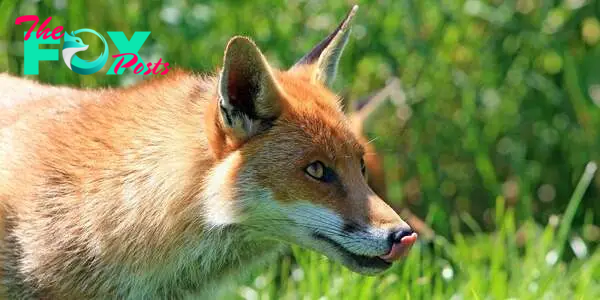Animals
The Enigmatic Fox: Intelligence, Adaptability, and Ecological Role H13

The fox, known scientifically as Vulpes vulpes, is a fascinating creature that inhabits diverse habitats across the Northern Hemisphere, from forests and grasslands to urban areas. Renowned for its intelligence and adaptability, the fox has carved out a niche as both a predator and scavenger, playing a crucial role in its ecosystem.
Foxes are characterized by their sleek bodies, pointed muzzles, and bushy tails, which they use for balance, warmth, and communication. Their fur varies in color depending on the species and environment, ranging from red and gray to silver and black. These adaptive traits help foxes blend into their surroundings, providing camouflage against predators and prey alike.

One of the most iconic species is the red fox (Vulpes vulpes), found throughout Europe, Asia, and North America. Red foxes are opportunistic omnivores, feeding on small maMMAls, birds, insects, fruits, and even human refuse when available. Their hunting prowess is enhanced by acute senses of hearing and smell, enabling them to detect prey rustling beneath the ground or hidden in vegetation.
In addition to their hunting skills, foxes are known for their cunning behavior, often employing stealth and patience to secure a meal. They are adept at stalking prey, using a combination of slow, calculated movements and sudden bursts of speed to catch their target by surprise. This agility is further demonstrated in their ability to navigate various terrains, from dense forests to open fields, with ease.

Socially, foxes exhibit complex behaviors that vary by species and environment. While some live solitary lives, others form small family units known as “vixens,” comprising a breeding pair and their offspring. These familial bonds are crucial for survival, as they facilitate cooperative hunting, grooming, and protection against predators.
Fox communication involves a repertoire of vocalizations, body language, and scent marking. Their calls range from high-pitched screams to barks and chirps, each serving different purposes such as signaling territory boundaries or coordinating with family members during hunts. Scent marking, achieved through urine and gland secretions, helps foxes establish dominance and attract potential mates.
Reproduction among foxes typically occurs once a year, with mating rituals often involving courtship displays and mutual grooming between mates. After a gestation period of about 50 days, vixens give birth to a litter of pups in underground dens, lined with fur and vegetation for warmth. The number of pups varies by species but ranges from one to ten, with both parents playing roles in nurturing and protecting their young.
Foxes face various challenges in their natural habitats, including habitat loss due to human encroachment, predation by larger carnivores, and diseases such as rabies and canine distemper. Conservation efforts focus on preserving their habitats, managing populations through hunting regulations where necessary, and educating the public about coexisting with wildlife.

In folklore and mythology, foxes often symbolize cunning and adaptability, appearing in stories from cultures around the world. From the trickster fox in Native American folklore to the wise fox in Japanese mythology, these creatures inspire a sense of mystery and respect among humans.
In conclusion, the fox is a remarkable animal that thrives in diverse environments through its intelligence, adaptability, and complex social behaviors. As humans continue to encroach upon their habitats, understanding and conserving these iconic creatures are crucial for maintaining ecological balance and preserving the natural world for future generations.
-

 Animals1h ago
Animals1h agoBrave Elephant Defends Calf from Hyenas in Dramatic Bush Battle
-

 Animals1h ago
Animals1h agoThis Squirrel who survived the Storm has his little Teddy Bear and Won’t let him go!
-

 Animals1h ago
Animals1h agoMy giant service dog takes up a whole row on a plane — I don’t care, I need her
-

 Animals1h ago
Animals1h agoParalyzed puppy able to walk again thanks to 3D printed spine
-

 Animals6h ago
Animals6h agoBirth of Rare White Buffalo in Yellowstone Fulfills Lakota Prophecy
-

 Animals6h ago
Animals6h agoPack of baby elephants rescued from muddy situation
-

 Animals6h ago
Animals6h agoI paid a pet detective $1K to find my missing cat — it was all worth it
-

 Animals6h ago
Animals6h agoDoctors remove lung from dog that nearly died after inhaling fungus found in soil

















